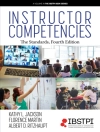Your best resource for curriculum leadership post-NCLB and beyond!
Put quality curriculum front and center with this classic toolkit to savvy curriculum leadership for the 21st Century. Newly revised and updated case studies, research, and state and national curriculum and leadership standards complement a completely new section focused on emerging technologies.
New features include up-to-date information on:
- Professional Standards for Educational Leaders, ESSA, CCSS and more
- District-level curriculum mapping, planning, and integration
- Facilitating professional growth, learning-centered scheduling, and leadership time management
- State curriculum frameworks, online assessments, SBAC, PARCC, and adaptive testing
Learn what it really takes to structure, align, integrate and evaluate quality curriculum in the post-NCLB, ESSA and Common Core era. This nuts and bolts guide will help you navigate the new curriculum landscape with ease!
’As principals, we so often get caught up in the day-to-day management of our schools. We must quit putting out fires and instead focus our attention on leading, specifically as curriculum leaders. The Principal as Curriculum Leader provides a clear framework with a plan of action to put you and your school on a path to student success.’
—Stephen Baker, Principal
Smithfield-Selma High School, NC
’The Principal as Curriculum Leader is a blueprint for principals to use when implementing curriculum reform. It brings clarity to the many trends, mandates, and guidelines that masquerade as simple solutions to complex issues. This book should be read and owned by every principal and curriculum leader.’
—Dr. Jerry V. Congleton, Former Superintendent
Weldon City Schools
Spis treści
Preface to the Fourth Edition
Acknowledgments
About the Authors
PART I: Laying the Foundations
1. What It Means to Be a Curriculum Leader: Post Race to the Top, the Era of the Common Core of State Standards (CCSS) and the Every Student Succeeds Act of 2015 (ESSA)
Movement Toward National Standards
Influences on Curricula: Current and Past
The Hallmarks of Curriculum Quality
Chapter Summary
References
2. Some Current Trends in Curriculum, Instruction, and Assessment in the Era of the Every Student Succeeds Act and New State Standards for Curriculum (ESSA and CCSS)
Some Current Trends in Curriculum
Some Practices Related to Current Trends in Curriculum
What These Trends Mean
Chapter Summary
References
3. The Five Curriculum Levels: National, State, District, School, and Classroom
National Functions
State Functions
District Functions
School Functions
Classroom Functions
Flexible Allocations
Chapter Summary
References
4. Importance of the Principal
No Child Left Behind (NCLB) Commission Report Called for Definition of Highly Effective Principals
Professional Standards for Educational Leaders (PSEL) 2015
Defining Curriculum Leadership
Understanding the Problems of the Principal’s Curriculum Leadership Role
Understanding the Rationale for Principal Leadership
Uniting Principal and Teacher Leadership
Performing the Leadership Functions
Chapter Summary
References
PART II: Shaping State and District Curricula
5. State Policies and Frameworks
The Case of State Frameworks in North Carolina, Tennessee, and Mississippi
Becoming Informed
Getting the Message Across
Evaluating State Frameworks
Chapter Summary
References
6. District Curricula
District Functions
Exercising Influence as the Principal
Chapter Summary
References
PART III: Providing Leadership
7. Developing Vision and Goals
Developing the School’s Vision of a Quality Curriculum
Developing the School’s Curriculum Goals
Chapter Summary
References
8. Rethinking the Program of Studies
Renewing an Existing Program of Studies
Restructuring the Program of Studies
Chapter Summary
References
9. Committing to a Learning-Centered Schedule and Protection of Instructional Time
The Nature of a Learning-Centered Schedule
Developing a Learning-Centered Schedule
How the Principal and Teachers Can Make More Effective Use of the Existing Schedule
Chapter Summary
References
10. Integrating the Curriculum
Types of Integration
Arguments Supporting Integration
Arguments Questioning the Use of Integration
Some Challenges of Integration at All Levels
A Process for Resolving the Integration Issue
Chapter Summary
References
11. Aligning the Curriculum
Types of Curricula
Aligning the Recommended and the Written Curricula
Aligning the Written, the Supported, and the Assessed Curricula
Aligning the Written and the Taught Curricula
Aligning the Hidden and the Learned Curricula
Aligning the Taught and the Learned Curricula
Chapter Summary
References
12. Monitoring the Curriculum Implementation Process
The Argument About Monitoring
A Practical Solution for Monitoring
Chapter Summary
References
PART IV: Working With Teachers
13. Making Yearly Planning Calendars and Curriculum Maps
The Nature of Yearly Plans and Curriculum Maps and a Rationale for Their Use
Organizing for Yearly Planning
Developing Yearly Plans
Reviewing the Plans
Chapter Summary
References
14. Developing Units of Study
A Rationale for Unit Development
Organizing for Unit Development
Developing Units Based on Constructivist Principles
Some Criticisms of Constructivism
Chapter Summary
References
15. Enriching the Curriculum and Remediating Learning
Helping Teachers Enrich the Curriculum
Helping Teachers Remediate Learning
Chapter Summary
References
16. Evaluating the Curriculum
Evaluating the Assessed or Tested Curriculum
Evaluating the Supported Curriculum
Evaluating the Written Curriculum
Evaluating the Taught Curriculum
Evaluating the Learned Curriculum
Chapter Summary
References
PART V: Looking Ahead
17. Curriculum Leadership: Putting It All Together
Work Closely With District Leadership
Set Up the Curriculum Organizational Structures
Use Team Leadership
Make Curriculum Improvement Part of an Overall Plan
Use an Incremental Process in Effecting Curricular Change
Prioritize Curriculum Tasks
Use Routine Activities to Support Quality Curricula
Develop Specific Plans and Manage Time
A Personal and Concluding Note
Chapter Summary
References
Index
O autorze
Jerry M. Jailall recently served as the state coordinator for the federal Comprehensive School Reform program and as a Title 1 Consultant at the North Carolina Department of Public Instruction. He has worked with 172 elementary, middle, and high schools implementing school reform initiatives. He previously coordinated the NC School Improvement Grants program in 107 school districts under the standards-based GOALS 2000 federal initiative. He has over 25 years of K-12 experience in public education spanning Guyana, the Bahamas, and the US. He is a former lecturer at the University of Guyana. He obtained his doctorate in education from East Carolina University.












